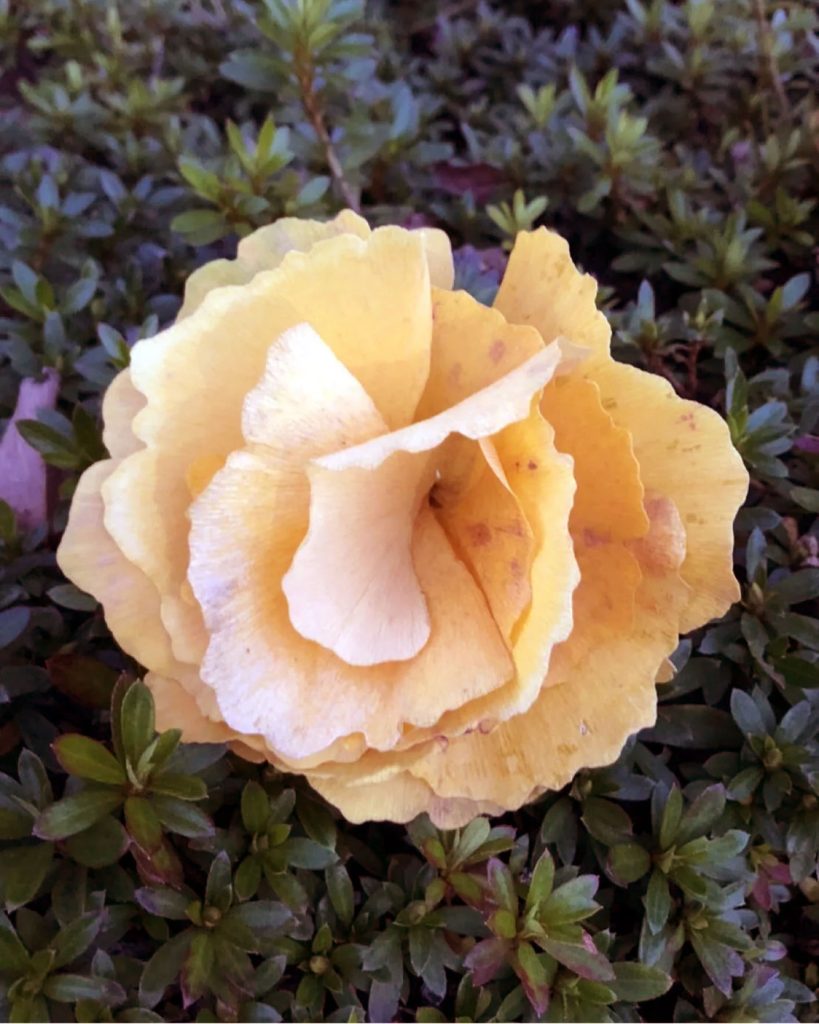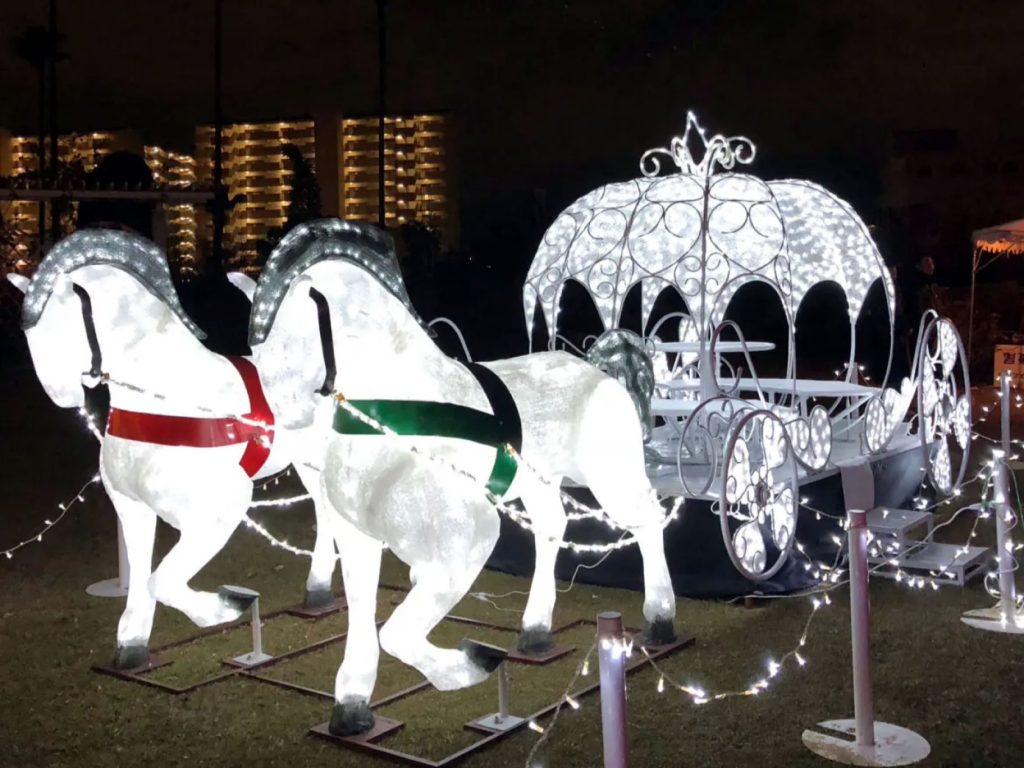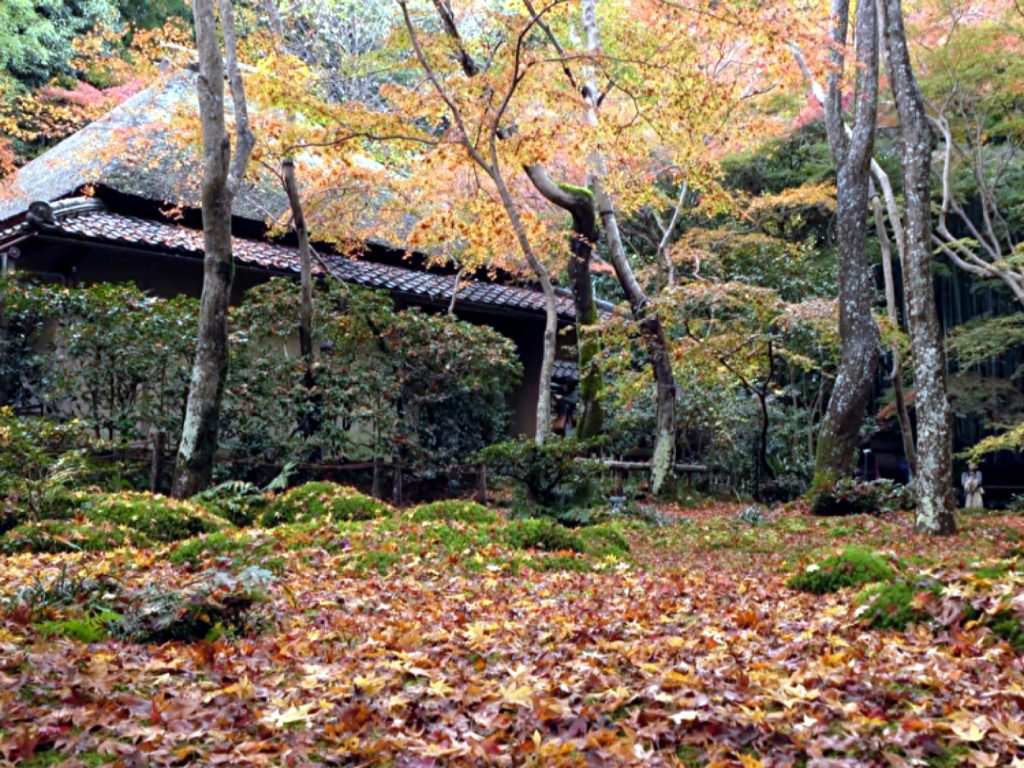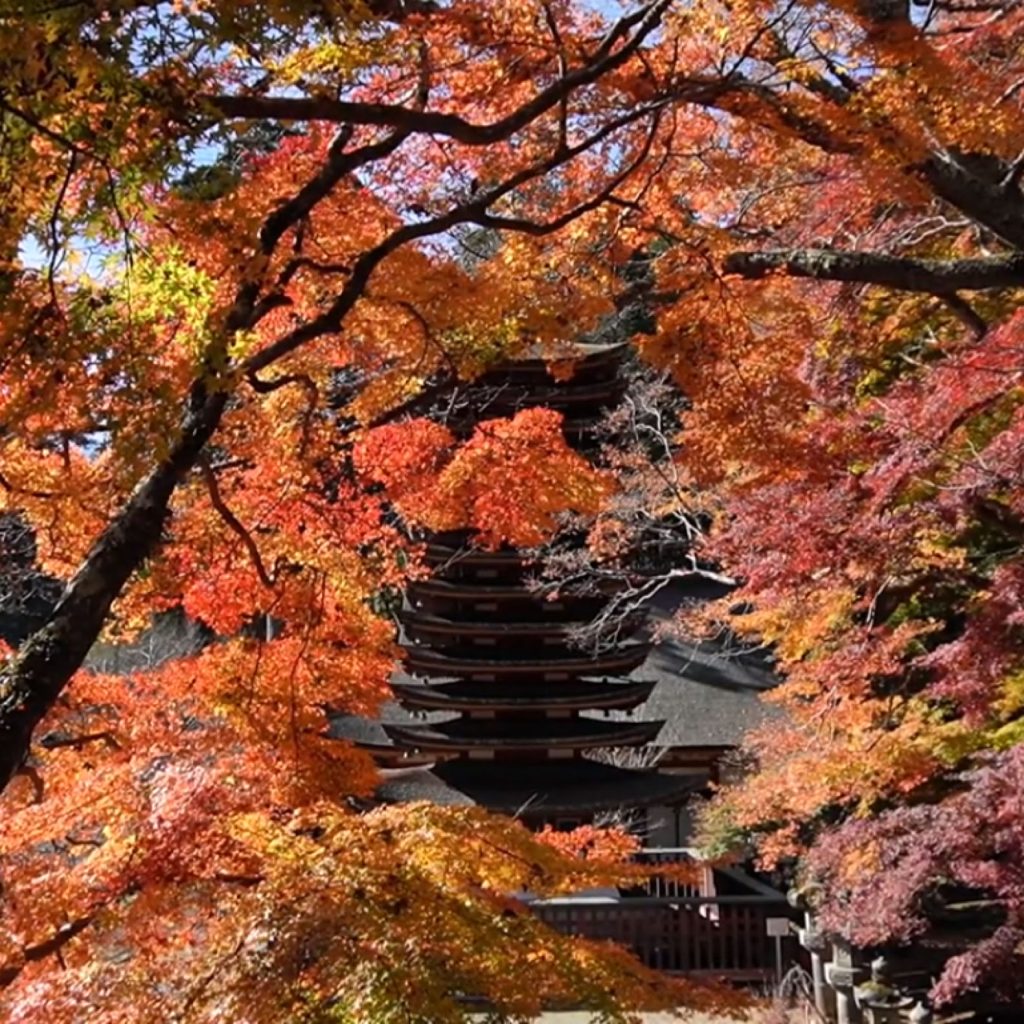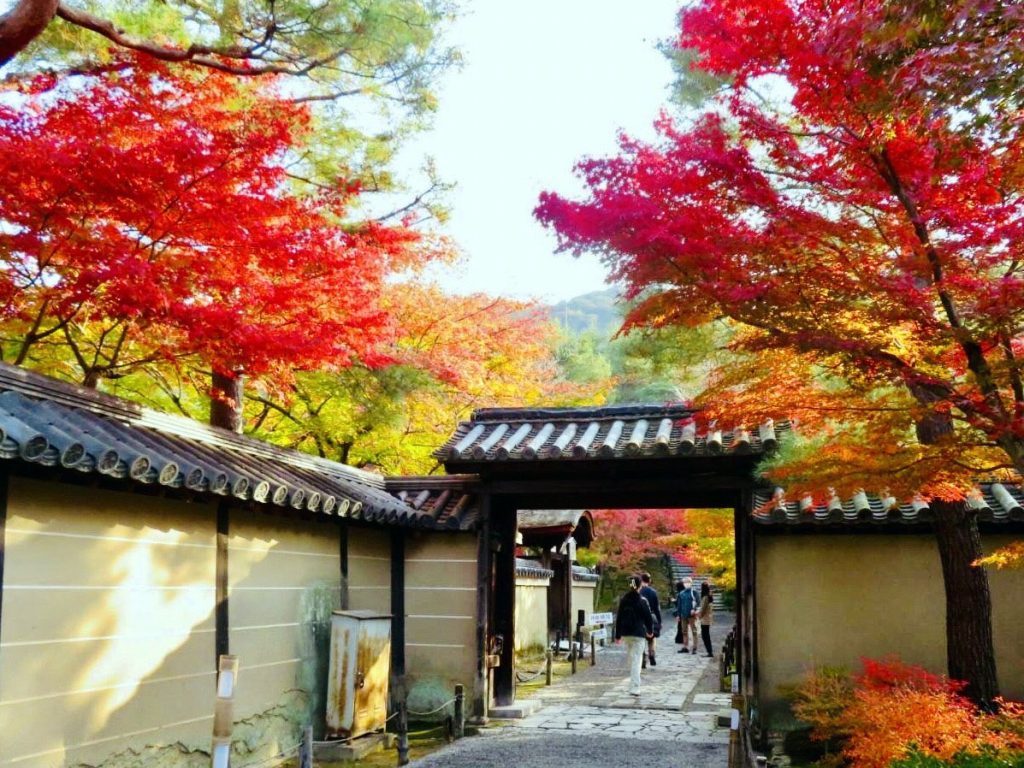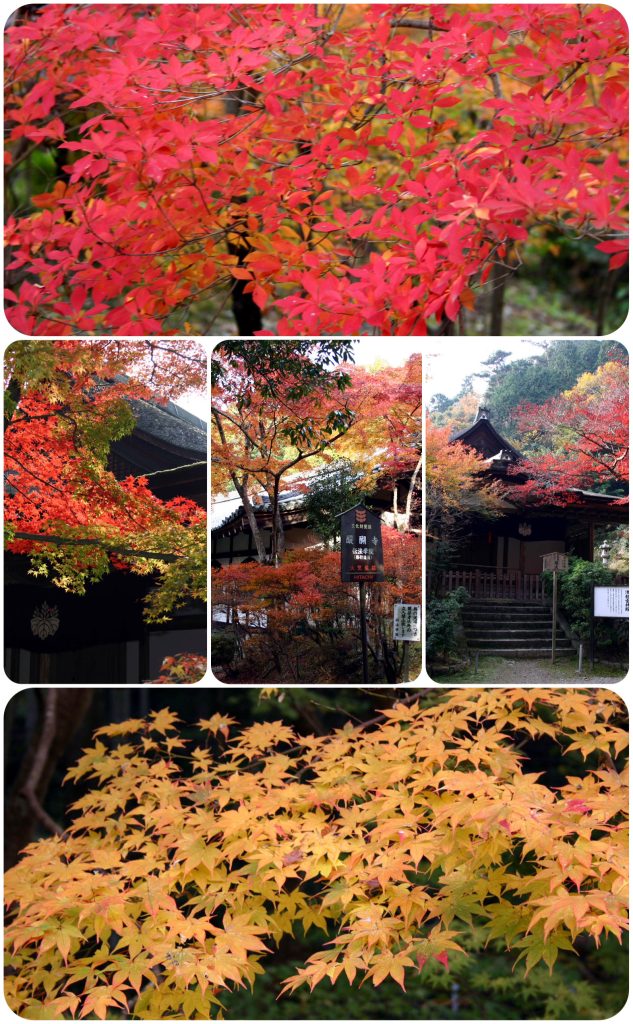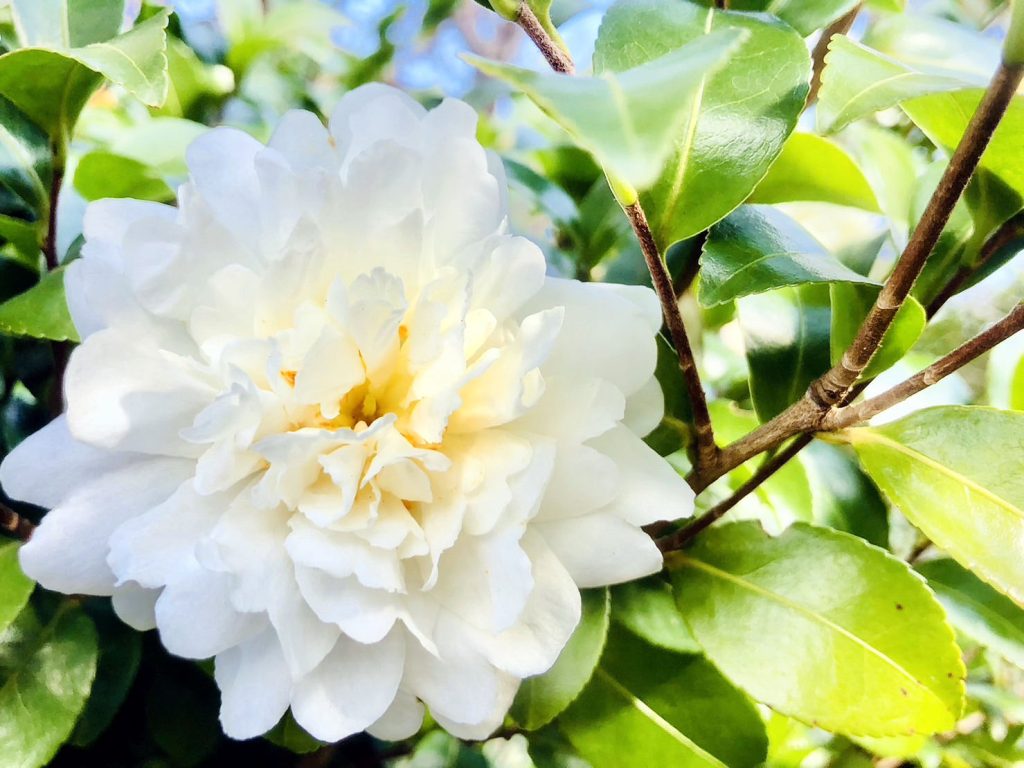
As autumn deepens, signaling the arrival of winter, the Sasanqua blooms prominently during the season of scarce flowers. Originating from Japan, this evergreen shrub has been traditionally used as a garden plant and hedge. The Sasanqua grows wild in the mountains of Shikoku, Kyushu, and the Okinawa Islands, bearing white flowers. However, the Sasanqua commonly seen is more often red than white. The white double-flowered varieties, as shown in the photograph, are cultivated species. It is closely related to the camellia (tsubaki), making it difficult to distinguish between the two. The flowering season for Sasanqua is from October to December, while camellias bloom from January to March. In Chinese characters, Sasanqua is written as “山茶花” (sazanka). The Chinese name for camellia, “山茶花” (sanshahua), was mistakenly transcribed as “茶山花” (sasanka), which evolved into the current pronunciation ‘sazanka.’ The Chinese name for Sasanqua is “茶梅” (chamei), and its scientific and English name is also Sasanqua Camellia. The white Sasanqua may seem to convey a frightening language of flowers, such as ‘you reject my love,’ but it is associated with the fleeting nature of white Sasanqua and does not literally carry a scary meaning.
秋が深まり、冬の訪れを感じる頃、花の少ない時期に人目をひくのがサザンカの花です。古くから庭木や生け垣として利用されてきた日本原産の常緑小低木です。サザンカは四国、九州の山中、沖縄諸島に野生し、白い花が咲きますが、普段目にするサザンカは白いものより赤い方が多いようです。白いサザンカも写真の様な八重咲も栽培種です。ツバキとは近縁種で見分けもつけ難いですが、サザンカの花期は10~12月で、ツバキは1月〜3月です。サザンカは漢字で「山茶花」と表記されますが、ツバキの中国名「山茶花(さんさか)」が誤記により「茶山花(ささんか)」になり、それが訛って『さざんか』になったとも言われています。サザンカの中国名は「茶梅」で、学名も英名もサザンカ(sasanqua camellia)です。白いサザンカには「あなたは私の愛を退ける」といった、一見すると怖い花言葉の様に思えますが、これは白いサザンカがはかなさを連想させることにちなんでいて、言葉のまま怖い意味を持つわけではありません。

